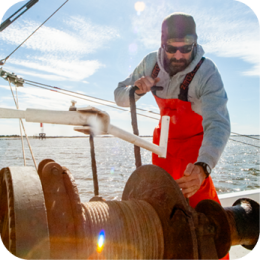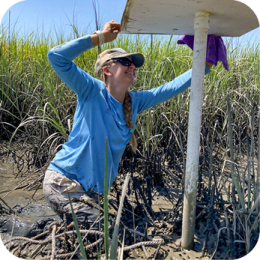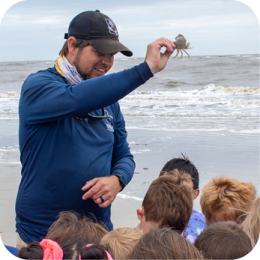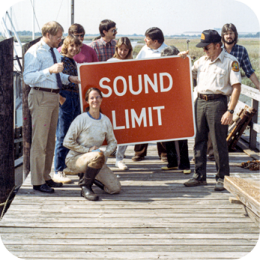The GA Coastal Management Program is pleased to offer the Brownbag Lecture Series to provide professional development opportunities and information sharing amongst coastal management professionals. The intent is to highlight the work of resource managers, researchers, and practitioners focusing on natural and cultural coastal resources.
Please see below for upcoming events. Unless otherwise noted the Brownbags will be held at the GA DNR Coastal Regional Headquarters at One Conservation Way, Brunswick, GA 31520 in the Susan Shipman Environmental Learning Center.
If you are interested in presenting at a Brownbag please contact Kelly Hill at kelly.hill@dnr.ga.gov or (912) 264-7218.
And as always, feel free to bring your lunch and a friend!
May 22nd, 2025 | 12pm-1pm | Economic Benefits of Georgia’s Artificial Reef Program
Please join the GA Coastal Management Program for a Brownbag Presentation on Economic Benefits of Georgia’s Artificial Reef Program by Dr. Eugene Frimpong, with the University of Georgia Marine Extension and Georgia Sea Grant.
Over the past 50 years, Georgia's Department of Natural Resources Coastal Resources Division (GA DNR CRD) has built 46 artificial reef sites across 70,000 acres, creating a thriving marine habitat on a once-empty seafloor. There is still plenty of space to add more reef structures, as only 59 acres have been built on so far. These reefs support marine life, boost fishing, and benefit the local economy. To optimize resource allocation and bring in funding for the AR program, University of Georgia Marine Extension and Georgia Sea Grant and GA DNR CRD collected data from 370 marine resource users, including anglers, guides, and divers. Dr. Eugene Frimpong, the project lead, will talk about the survey results, including what people value most about ARs, how much they think these artificial reef features are worth, the economic impacts of the AR program, and the overall net benefit it provides.

Speaker Bio:
Dr. Eugene Frimpong is the Coastal Economic Specialist for University of Georgia Marine Extension and Georgia Sea Grant. His expertise includes assessing non-market values of ecosystem services, examining the economic impacts of environmental policies, and studying the economics of natural hazards adaptation and mitigation.
Calendar Download Link: Economic Benefits of Georgia’s Artificial Reef Program
March 13th, 2025 | 12pm-1pm | Blue Carbon Basics
Please join the GA Coastal Management Program for a Brownbag Presentation on Blue Carbon Basics by Katie Hill, J.D., with the University of Georgia’s Carl Vinson Institute of Government.
Blue carbon refers to coastal ecosystems that can store significant amounts of carbon (salt marsh, mangroves, and sea grasses). They have received much interest in recent years because of their potential in helping nation’s fulfill their international climate change obligations and because of their ability to generate carbon offset credits through some types of projects. Hill will give an overview of her research into blue carbon science, policy, and projects, primarily focusing on blue carbon’s place in U.S. carbon offset markets. She will describe how these ecosystems store carbon, what types of projects could generate carbon offset credits, challenges and opportunities with existing offset methodologies, and blue carbon initiatives in other states.
_compressed.jpg)
Speaker Bio: Katie Hill is Public Service Faculty in the Infrastructure and Community Resilience Division at the University of Georgia Carl Vinson Institute of Government and also serves as the Director of Marine Extension and Georgia Sea Grant's legal program. Her research primarily focuses on coastal resiliency topics, including coastal restoration, wetland policies, land development and conservation, aquaculture, stormwater policy, and legal tools for disaster management.
Calendar Download Link: Blue Carbon Basics
February 11th, 2025 | 12pm-2:30pm | Collecting Acoustic Data in the Coastal Ocean: New Insights from Autonomous Underwater Vehicles
Gliders are autonomous underwater vehicles, or ocean robots, that fly by changing their buoyancy and center of gravity, which makes them a relatively quiet platform for collecting acoustic data in the coastal ocean. Catherine Edwards will give an overview of her recent work in coastal Georgia using gliders for acoustic telemetry and real-time monitoring of right whales using passive acoustics, give some examples of how understanding environmental conditions can help inform interpretation of the acoustic data, and consider how to leverage these data streams to design smart systems for fisheries science and management.
Science After Party: (Begins at 1:00pm following Brownbag) In the science after-party, Frank McQuarrie will dig into the data from recent acoustic telemetry work at Gray's Reef National Marine Sanctuary in more detail, and consider what processes control the effectiveness of telemetry on tidal, daily, weather, and seasonal time scales, showing data from Gray's Reef as evidence. The second half of the after party will be a group discussion to consider the practical implications for interpretation of the data for management purposes.
Calendar Link: Collecting Acoustic Data in the Ocean
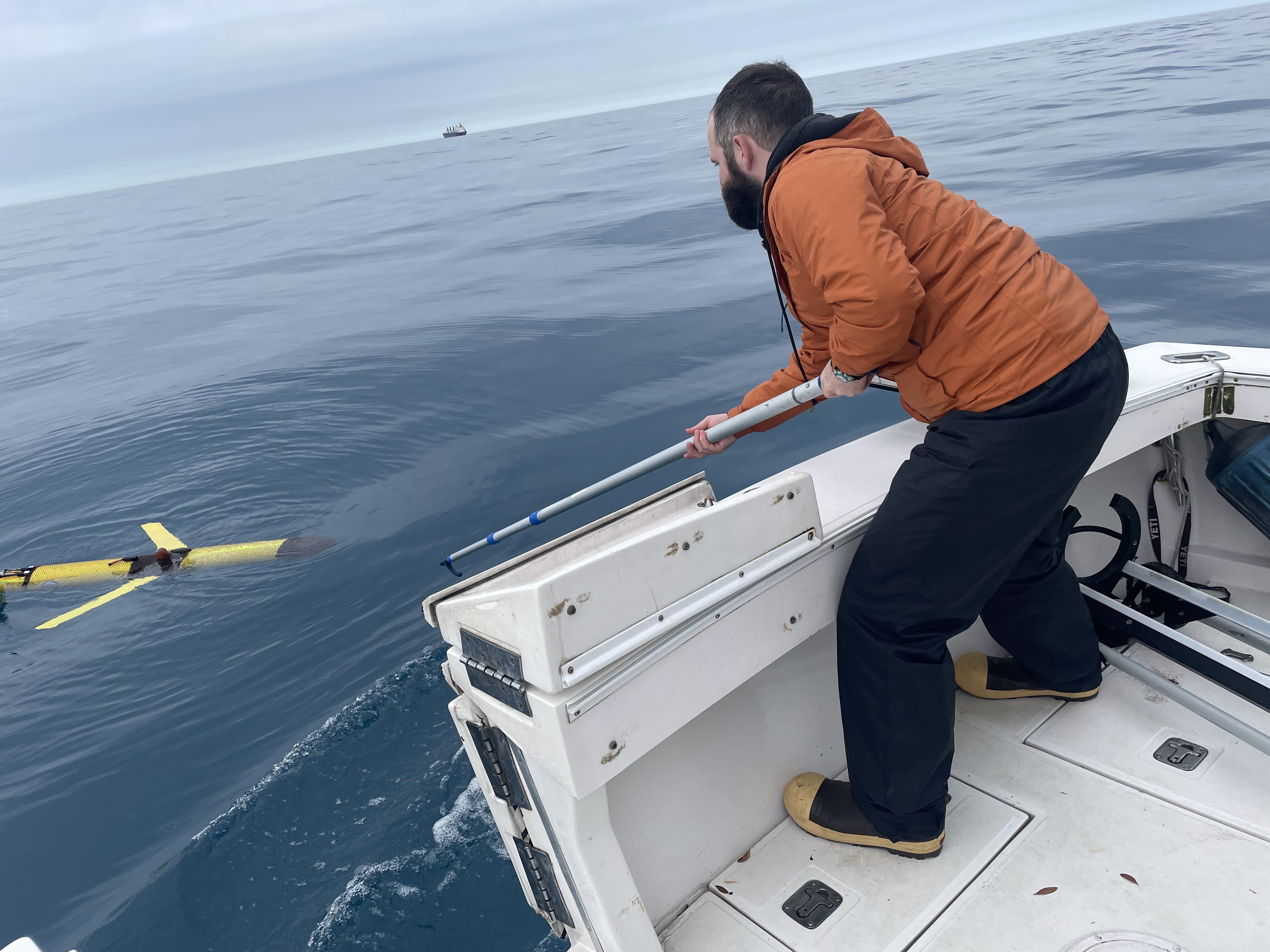
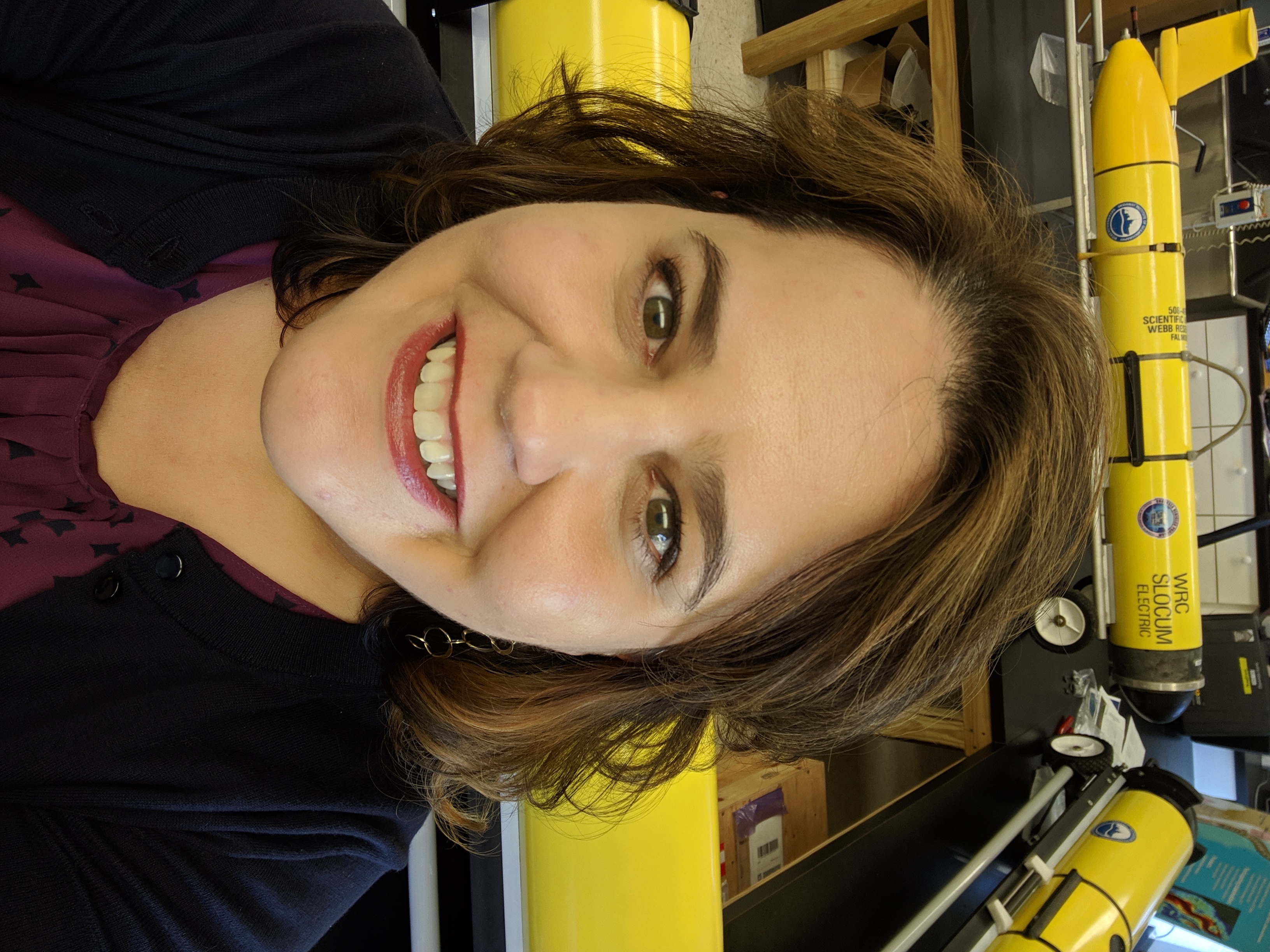
December 12th, 2024 | 11am-1pm | Coastal Georgia's Changing Tree Canopy (2010-2019)
Funded through a Georgia DNR Coastal Incentive Grant, Mr. Giarrusso derived high-resolution tree canopy cover for 2010 and 2019 using 1-m resolution NAIP imagery for Georgia’s six oceanfront counties. Come learn about how the coastal canopy has changed over time. Mr. Giarrusso will present his research findings and publicly available data, geospatial tools and resources he created as part of this project. In addition to coast-wide information, this session will focus on findings for Glynn county.
Calendar Link: Coastal Georgia Tree Canopy
November 26th, 2024 | 12pm-1pm | Energy and Sustainability in the Age of Artificial Intelligence
Please join the GA Coastal Management Program for a Brownbag Presentation on Energy and Sustainability in the Age of Artificial Intelligence by Commissioner Tim Echols with the Georgia Public Service Commission.
During the Brown bag seminar, Tim Echols, the vice-chair of the Georgia Public Service Commission will explore the enormous energy usage that artificial intelligence and data centers are poised to devour. He’ll talk about the evolution of solar in Georgia and the likelihood that this will continue to grow. He’ll explore power bills, and the impact that the Ukrainian conflict had on Georgia bills, along with the completion of the nuclear power units.
Energy and Sustainability in the Age of Artificial Intelligence Calendar Download
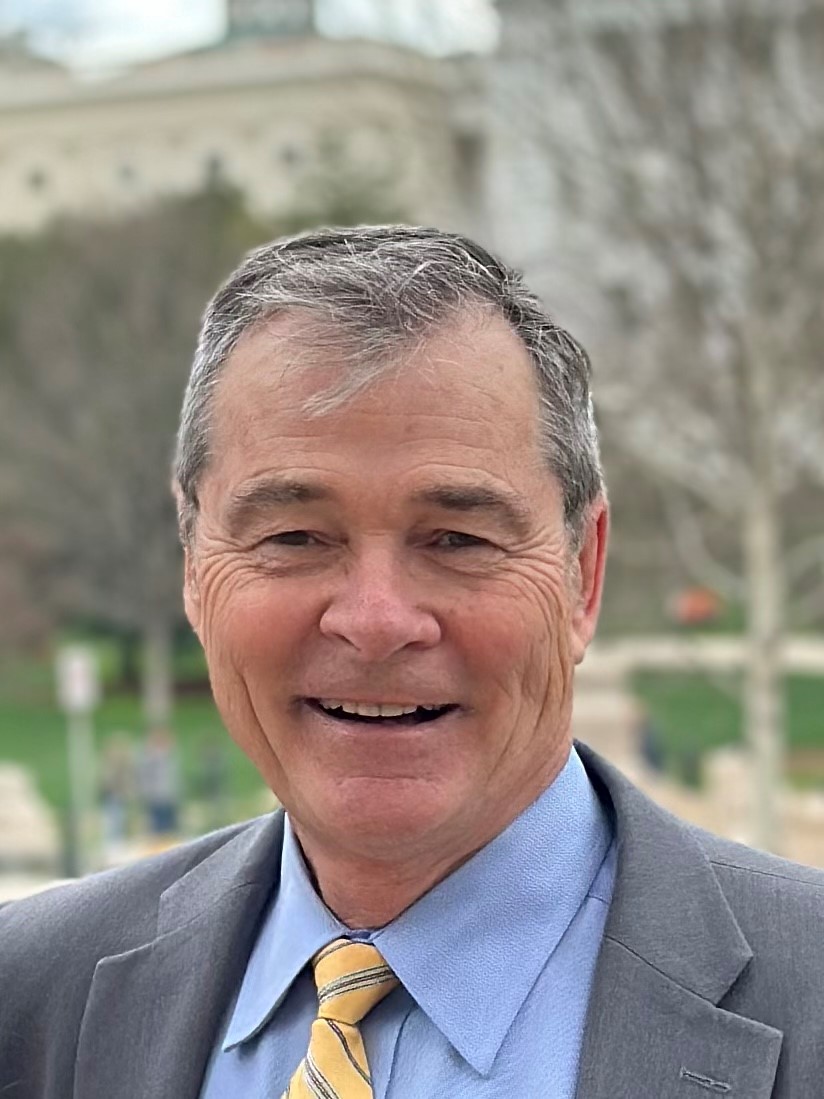
November 7th, 2024 | 12pm-1pm | Improving Resilience in West Brunswick
Please join the GA Coastal Management Program for a Brownbag Presentation on Improving Resilience in West Brunswick by Ben Pierce with GWES on behalf of the City of Brunswick.
The City of Brunswick’s (City) Stormwater Masterplan (SWMP) updated in 2020 describes tide control, bank stabilization, and upstream capacity as a growing challenge for the City’s stormwater management and infrastructure maintenance program. The SWMP identifies priority areas where improvements may have significant impacts on infrastructure performance and community safety and well-being. The City was awarded a Coastal Incentive Grant through the Georgia Department of Natural Resources Coastal Resources Division to address tide control, bank stabilization, and upstream capacity issues at several stormwater outfalls along the City’s western boundary.
Improving Resilience in West Brunswick Calendar Download
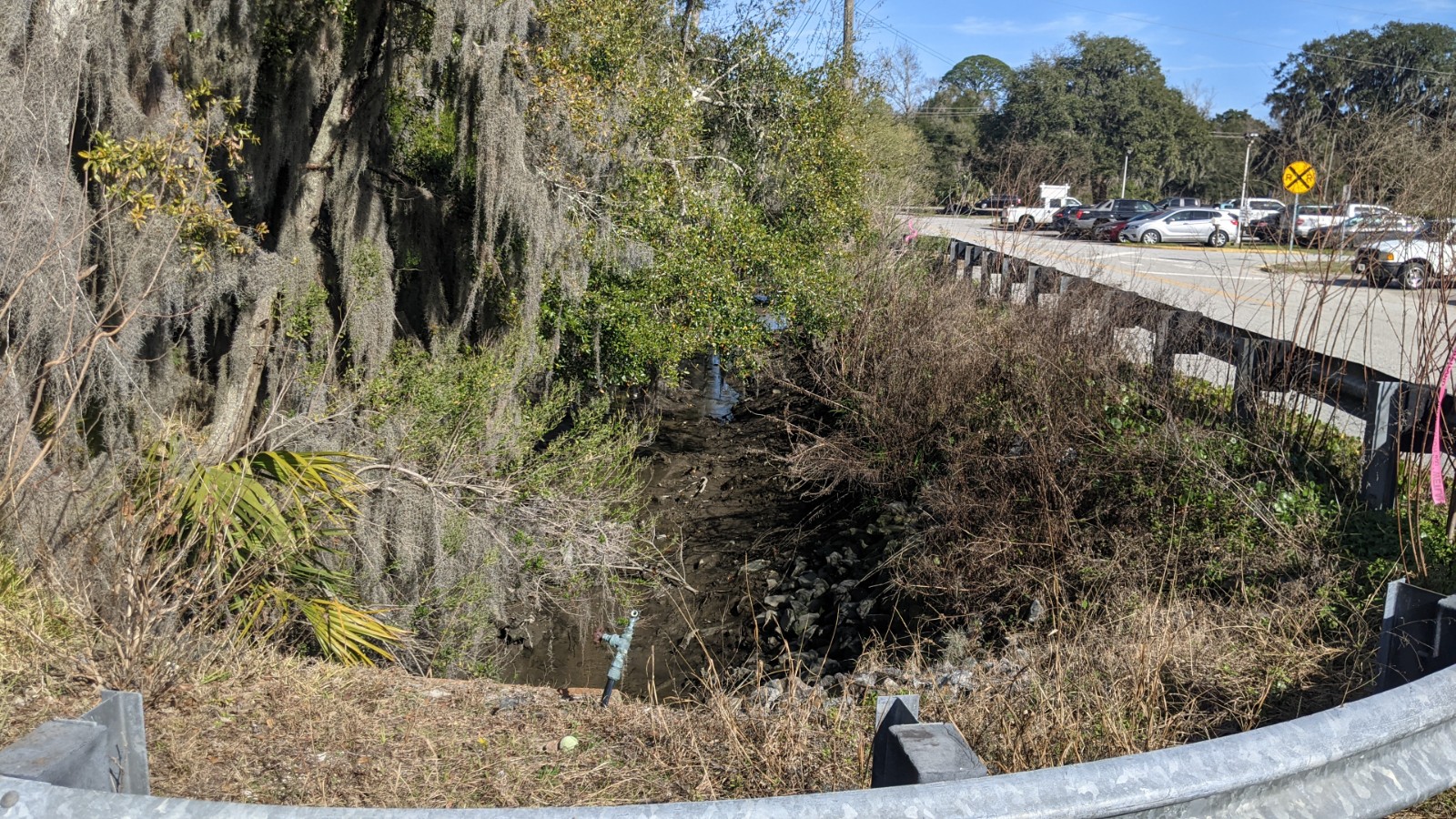
September 5th, 2024 | 12pm-1pm | Vessels and Railway- Assessing Commercial Fishing Infrastructure in Coastal Georgia
The Georgia Department of Natural Resources, Coastal Resources Division is interested in identifying critical repairs and investments needed for the on-going sustainability of the commercial shrimp industry to prioritize the use of potential future disaster or other federal funds. To fill data gaps on the industry, an assessment of Georgia’s shrimp fleet was conducted by researchers from UGA Marine Extension/Georgia Sea Grant, and Georgia Southern University. Fluech and Tookes interviewed 25 vessel owners/operators, 2 local railway/boatyard facilities, and 5 out-of-state boatyards between June 2023 and February 2024.
This presentation will summarize their findings on repair needs and maintenance costs for shrimp vessels and railways, and potential paths forward for GADNR-CRD investment in the industry.
Calendar Link: Commercial Fishing Infrastructure
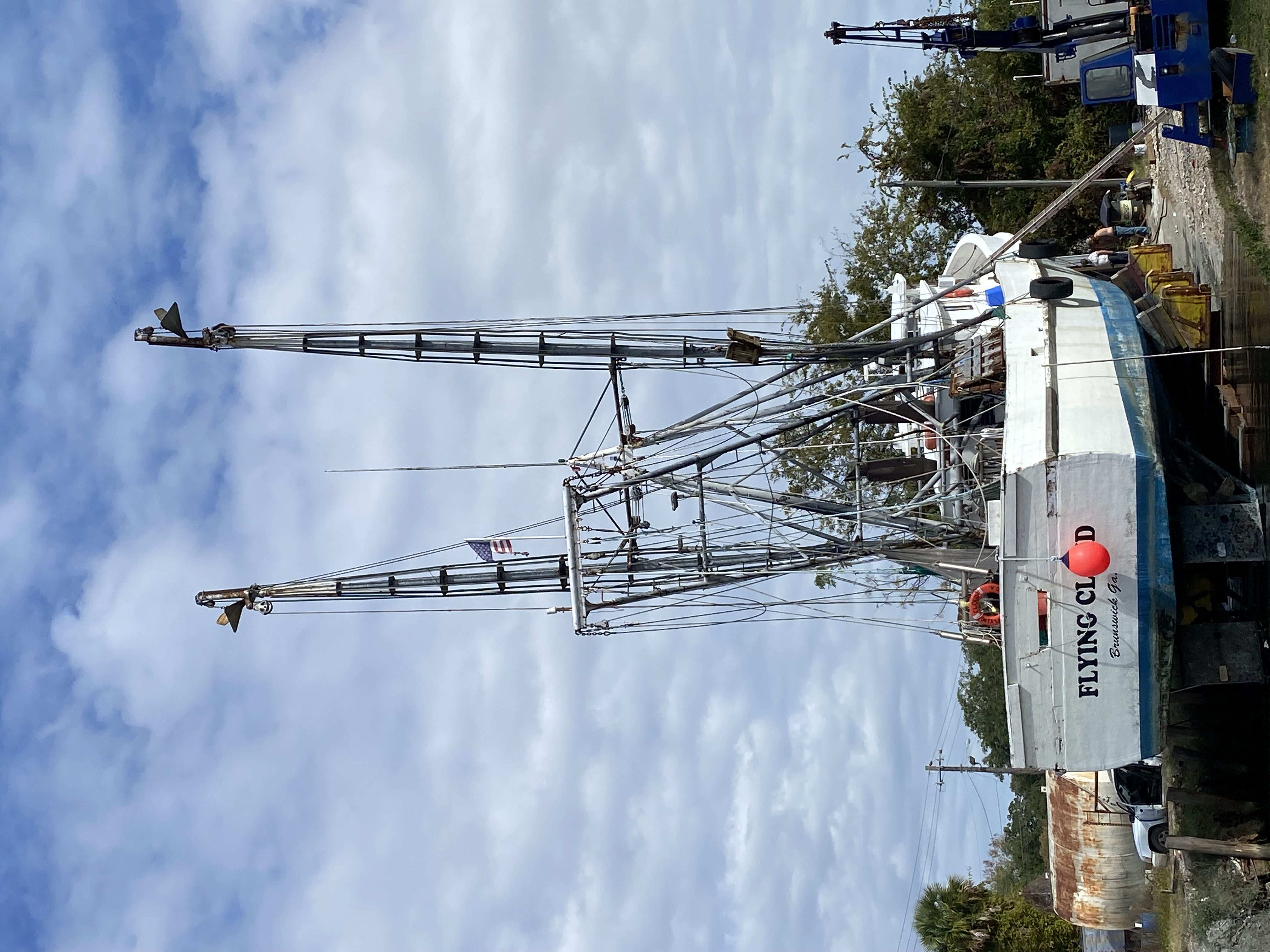
March 27th, 2024 | 12pm-1pm | Birds Georgia and Project Safe Flight | Sarah Tolve, Birds Georgia
Birds Georgia is a member-supported, 501c3 nonprofit organization building places where birds and people thrive. We create bird-friendly communities through conservation, education, and community engagement.
Birds Georgia has been studying collision-related bird deaths through the Project Safe Flight Program since 2015. Project Safe Flight is a conservation effort to further understand the issue of bird/building collisions in the Atlanta metro area as well as in Brunswick and Savannah.
The goal of this project is to determine what species are colliding with buildings, how many birds are affected, what parts of town are problematic, and what can be done to make Georgia's cities more bird friendly. Since fall 2015, more than 3,000 birds, representing 156 different species, have been collected.
Calendar Link: Birds Georgia and Project Safe Flight
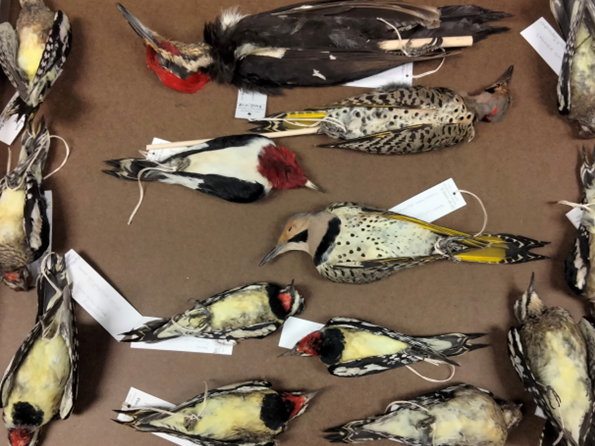
December 6th, 2023 |12pm-1pm| Exploring Coastal Resources Division's Red Drum Projects | Ryan Harrell and Chris Kalinowsky, CRD Marine Fisheries
Ryan Harrell will present on An Overview of the Marine Sportfish Population Health Survey
GA DNR Coastal Resources Division’s Marine Sportfish Population Health Survey began in 2003 to collect timely and relevant data on fish species popular with recreational inshore anglers. This entanglement gear survey is conducted annually in three of Georgia’s estuaries. Data collected are used to create long term uninterrupted indexes of abundance, monitor trends in populations and determine the efficacy of current management practices. Marine Fisheries Biologist Ryan Harrell will discuss the history of the survey, how the data is used, and the need to continue long-term monitoring of Georgia’s estuarine fish species.
Chris Kalinowsky will present on Georgia’s Red Drum Acoustic Tagging Escapement Project
In late 2019, the GA DNR Coastal Resources Division began an autonomous acoustic telemetry project to study the movement of Red Drum in Wassaw Sound (Chatham County, GA). Autonomous acoustic telemetry is the use of stationary receivers to monitor the movements of animals tagged with coded acoustic transmitters. Acoustic telemetry studies can provide some of the same types of information as conventional tagging studies, with the added benefit of providing more detailed information about specific movements, seasonality, aggregation areas, home ranges, and interstate migrations. Data from this study will help us improve our understanding of and management efforts on Red Drum in Georgia. Marine Fisheries Biologist Chris Kalinowsky will discuss the history of the study and provide a summary of some of the preliminary findings.
Calendar Link: CRD Red Drum Projects


November 7th, 2023|12pm-1pm| Commercial Fishing Data Collection in GA and the Challenges Facing the Commercial Fishing Industry| Julie Califf, CRD Marine Fisheries Biologist
The Coastal Resources Division's commercial fisheries data collection program has historically been primarily geared towards resource management. Over the last decade, the data collected by the program has been used to address new challenges, particularly those related to the economic viability of Georgia's fishing industry in the face of natural disasters and competition from imported seafood. Biologist Julie Califf will discuss the history of the data collection program and how the data are used by managers and fishery participants.
Calendar Link: GA Commercial Fisheries
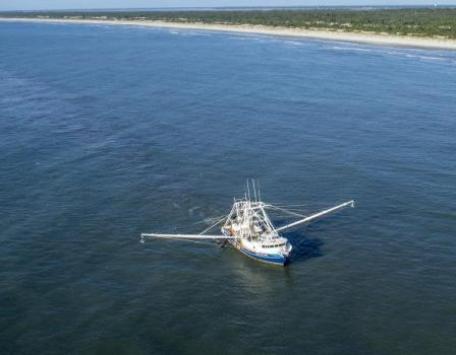
September 12th, 2023| 12pm-1pm | The East Brunswick Tide Control Project| Garrow Alberson, P.E.(City of Brunswick) and Ben Pierce, P.E. (GWES)
The City of Brunswick’s (City) Stormwater Masterplan (SWMP) updated in 2020 describes tide control as a growing challenge for the City’s stormwater management and infrastructure maintenance program. The SWMP identifies priority areas where improvements may have significant impacts on infrastructure performance and community safety and well-being. The City was awarded a Coastal Incentive Grant through the Georgia Department of Natural Resources Coastal Resources Division to address tide control issues at stormwater outfalls along the City’s eastern boundary. The City implemented the East Brunswick Tide Control project to address tide control at three (3) priority areas identified in the SWMP. Project plans were completed to include outfall improvements at 10 City stormwater outfalls. Six (6) are located in the Riverside neighborhood. One (1) is located at the east end of Parkwood Drive. Two (2) are located along US Highway 17 near the Lanier Plaza. All outfall improvements include the installation of a Tideflex brand exterior check valve and end treatment. Standard end treatments, including headwalls and rip rap are included at all outfalls.
Calendar Link: East Brunswick Tide Control

July 11th, 2023| 12pm-1pm | The Coastal Equity and Resilience (CEAR) Hub: Water Level Monitoring and More | Dr. Russell Clark of the Georgia Institute of Technology
The CEAR Hub is a project that joins community organizations, local governments, and educational institutions together to develop the knowledge, tools, and strategies that make our communities more resilient. CEAR Hub partners work alongside members of vulnerable communities to create fair and just solutions to the climate challenges through community-led research, training, and outreach. This presentation will review the history of the Smart Sea Level Sensors program based in Savannah and update on new activities along the entire Georgia coast. (https://cearhub.org)
Calendar Link: CEAR Hub Brownbag

October 28th, 2022| 12pm-1pm| Meet some of CRD's Young Professionals Through Their Work and Research| Hailey Blische, B.J. Hilton, and Dillon Metz
Come learn about fisheries research and programs from the Marine Fisheries Section at the GA Department of Natural Resources, Coastal Resources Division. Staff will discuss several research projects and ongoing monitoring programs including presentations on:
- Distribution and detection of American eels in Mississippi- Haley Blische
- GADNR Coastal Resources Division's Ecological Monitoring Trawl Survey: It's Purpose, Procedures, and Benefits for Research Management- B.J. Hilton
- Georgia's Marine Sportfish Carcass Recovery Project- Dillon Metz
Calendar Link: CRD Marine Fisheries Presentations
August 26th, 2022| 12pm-1pm| Boat Stories: Leveraging Cultural Heritage to Support Sustainable Coastal Communities| Dr. Jennifer Sweeney Tookes and Mr. Bryan Fluech
This collaborative research project focus on the cultural significance of commercial fishing boats to coastal communities. Tookes and Fluech trained student researchers to conduct oral history interviews with commercial fishers across Georgia to gather important data while providing scientific research training to students. The project identified local perspectives on planning and development regarding vessels, and suggestions for supporting future resilience of the industry. By focusing on these key entities around which commercial fishers’ lives and businesses have revolved, we are preserving local heritage while simultaneously elucidating realistic approaches for sustaining the industry through future planning and development. The results of this research are available to the general public and managers through wide-ranging outreach via the national NOAA oral history archive (https://voices.nmfs.noaa.gov/collection/boat-stories) and a Story Map (https://storymaps.arcgis.com/stories/021bc8965b784bd9832e6d88cc7faae0)
Calendar Link: Boat Stories Brownbag
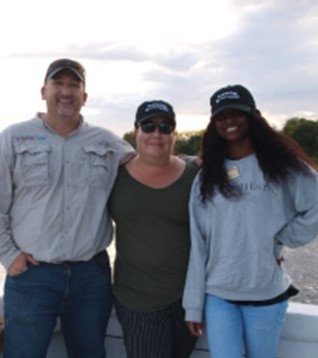
July 29th, 2022| 12pm-1pm| Quantifying oyster reef development and nekton use of habitat restored using traditional and alternative substrates in the Skidaway River| Cameron Atkinson, Savannah State University
The eastern oyster (Crassostrea virginica) is an important ecosystem engineer which has experienced declines throughout most of its range. Efforts to restore oyster reefs in Georgia have increased in popularity over the past few decades but there have been some challenges with constructing successful reef complexes. The success of the traditionally utilized restoration substrate, bagged oyster shell, has been hindered by the high sedimentation environment of Georgia’s estuaries and the diminishing availability of relic oyster shell. There is a need for alternative restoration substrates to be tested alongside the bagged shell substrate. Therefore, our research group is currently investigating the use of a novel restoration substrate, Oyster Catcher. The Oyster Catcher substrate consists of jute fibers which are coated in cement and molded into various designs. In May 2021, we constructed 6, 2 m X 10 m reefs (3 Bagged Shell & 3 Oyster Catcher) in the Skidaway River along the shoreline of the Skidaway Island State Park. Our group has been working to quantify the oyster reef development and the provisioning of nekton habitat at these restored reef sites with the aim of developing a better understanding of which substrate type could be the most beneficial for future restoration projects in Georgia.
Calendar Link: Oyster Reef Development Brownbag
BaggedShell(R).jpg)
April 20th, 2022| 12pm-1pm| A Virtual Tour of Gray's Reef National Marine Sanctuary| Superintendent Stan Rogers & Research Ecologist Kim Roberson
This presentation will provide a virtual tour of Gray’s Reef National Marine Sanctuary (GRNMS) including an overview of ongoing and new sanctuary programs and initiatives. To understand how the programs and initiatives support the management goals of the sanctuary, sanctuary representatives will start at the beginning of why GRNMS was designated in 1981, discuss major milestones over the years, and then provide the latest on resource protection, scientific research and monitoring, and education and outreach initiatives including upcoming condition report update and management plan review.
GRNMS, off the coast of Georgia, contains one of the largest nearshore, live-bottom reefs of the southeastern United States. Located 19 miles offshore from Sapelo Island, GRNMS is currently the only protected natural reef on the continental shelf off the Georgia coast and one of only a few marine protected areas in the ocean between Cape Hatteras, North Carolina and Cape Canaveral, Florida.
NOAA designated the sanctuary in 1981 to protect the quality of this unique and fragile ecological community. The approximately 22-square-mile sanctuary is just a small part of U.S. territorial waters, yet its value as a natural marine habitat is recognized nationally and internationally.
Calendar Link: Gray's Reef Brownbag

March 29th, 2022| 12pm-1pm| Evaluating Best Practices in Dune Restoration| Shannon Matzke, GA State Sea Grant Fellow/GADNR Coastal Resources Division
Coastal communities are developing rapidly in the face of increased risks of sea level rise and hurricanes stemming from anthropogenic climate change. In the US, erosion is projected to cost $530 million/year in property loss, but beaches and dune systems can minimize these losses. Dunes are vital to coastal protection, particularly when they are colonized by native plant species that stabilize sand with their root systems and accumulate sand by trapping particles with their stems and leaves. Dune construction can be used as a nature-based solution to climate change, but more studies are needed to fully understand the best practices that should be associated with vegetating constructed dunes.
To gain more insight into dune restoration, a Coastal Incentive Grant funded team from Georgia Southern and Tybee Island conducted a 15 month study on Tybee Island, GA, the site of new dune construction. They examined the effects of planting density on plant survival and growth and on sand accretion, and they compared accretion rates to those on pre-existing dunes on Tybee and unvegetated sites on the constructed dune.
While specific restoration strategies must be viewed through the lens of management goals, the team’s findings are consistent with the literature and have proven to work well on Tybee Island. The results of this study provide a framework both to future restoration projects on Tybee and to those taking place in other coastal communities.
Calendar Link: Dune Restoration Brownbag
February 28th, 2022| 12pm-1pm| The Georgia Flood Literacy Project | Meghan Angelina, GADNR Coastal Resources Division Wetlands Biologist
Terms related to flood hazards are being used inconsistently and interchangeably among professionals and the public. This presentation will review the Georgia Flood Literacy Project, an effort to unite 30 professionals from various sectors of the field to see what flood terms are being used and how they are being used.
One of the major goals of this group, known as the Flood Literacy Taskforce, was to work toward clear, consistent, widely applicable, and scientifically accurate definitions of flood terminology. These terms were compiled into professional and public versions of a Glossary of Flood Terms and an ArcGIS StoryMap was created to highlight the project and serve as a resource for flood terms.

